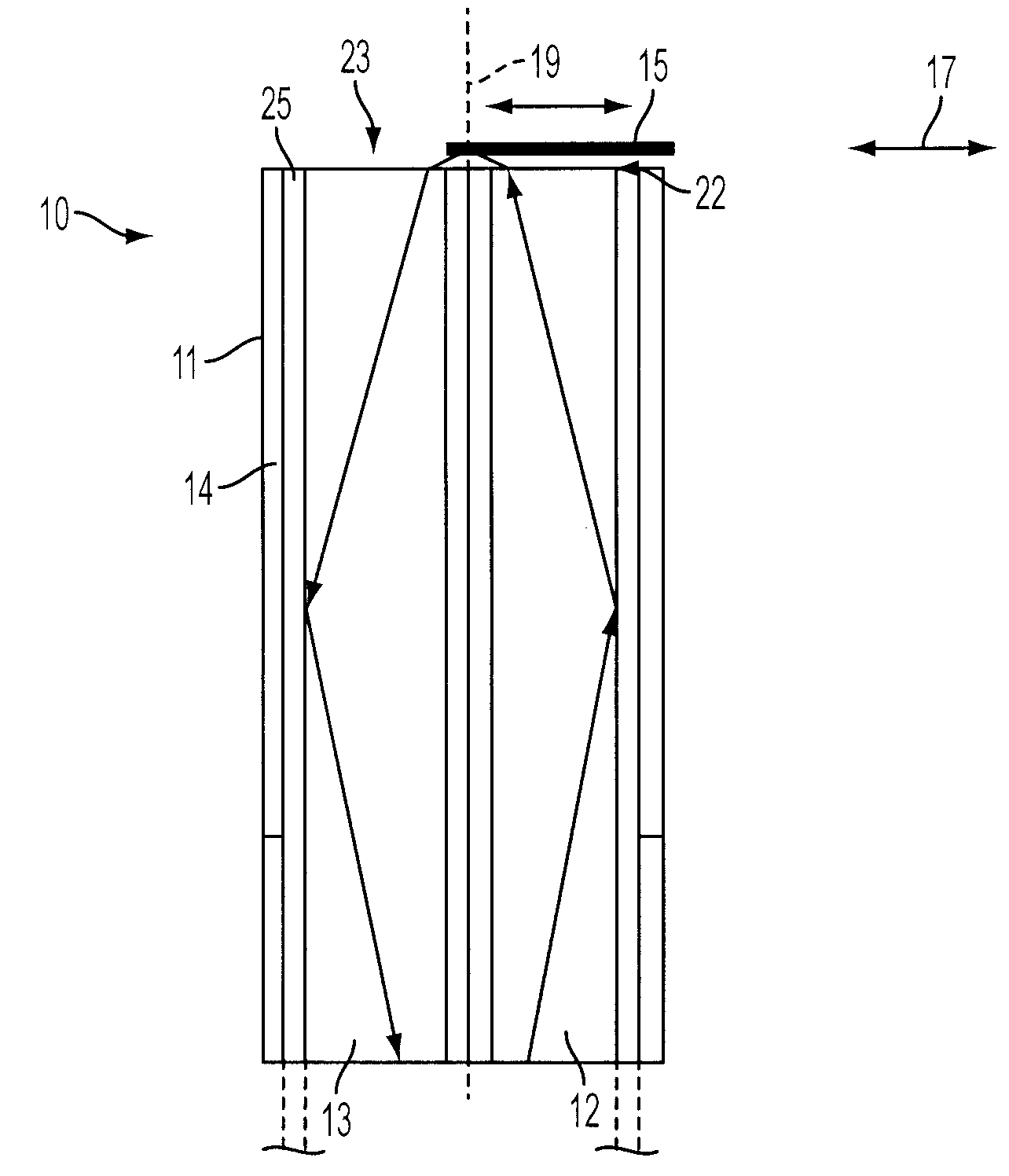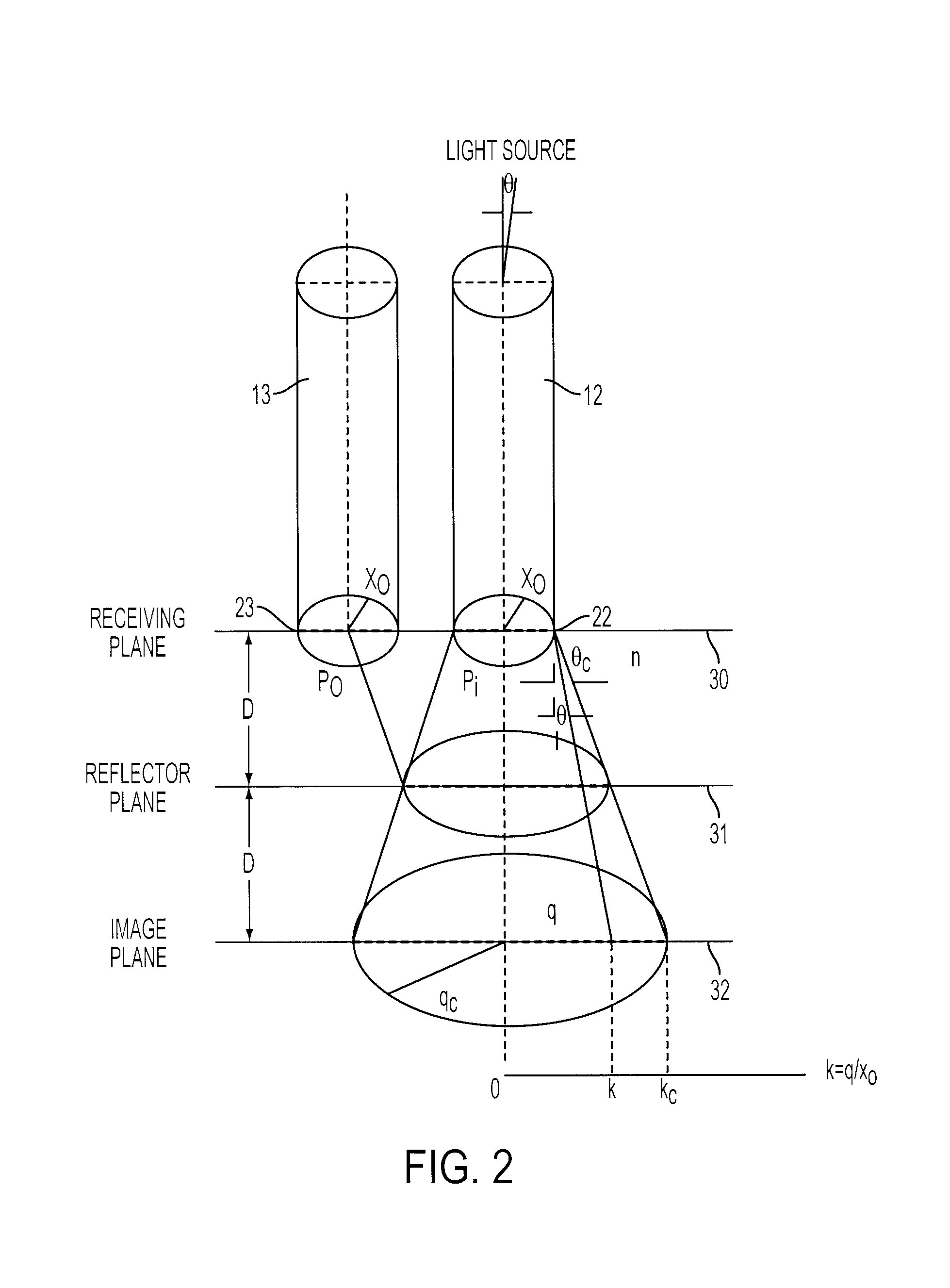Fiber Optic Acceleration and Displacement Sensors
a technology of fiber optics and sensors, applied in the field of fiber optic sensors for displacement and acceleration, can solve the problems of difficult remote control and multiplexing of these sensors, large sensor systems, and high cos
- Summary
- Abstract
- Description
- Claims
- Application Information
AI Technical Summary
Benefits of technology
Problems solved by technology
Method used
Image
Examples
Embodiment Construction
[0042]FIGS. 1A, 1B, and 1C illustrate basic principals of an intensity modulated fiber optic displacement and acceleration sensor 10 in accordance with an embodiment of the invention. The sensor 10 includes a fiber optic probe 11 having two multimode optical fibers, including a transmitting optical fiber 12 and a receiving optical fiber 13, each of which has a well polished fiber end 22 and 23. At the opposite end of the transmitting fiber 12 is a light emitting diode (LED) or other light source. A photodetector is positioned at the opposite end of the receiving fiber 13 for receiving light from the sensor 10 via the receiving fiber. Other components and connectors can be arranged between the LED, the sensor 10, and the photodetector.
[0043]As seen in FIG. 1B, the multimode optical fibers 12 and 13 each have a large core 24 and a cladding 25 with a lower index of refraction than that of the core. The two multimode optical fibers 12 and 13 are arranged within a housing 14, which can b...
PUM
 Login to View More
Login to View More Abstract
Description
Claims
Application Information
 Login to View More
Login to View More - R&D
- Intellectual Property
- Life Sciences
- Materials
- Tech Scout
- Unparalleled Data Quality
- Higher Quality Content
- 60% Fewer Hallucinations
Browse by: Latest US Patents, China's latest patents, Technical Efficacy Thesaurus, Application Domain, Technology Topic, Popular Technical Reports.
© 2025 PatSnap. All rights reserved.Legal|Privacy policy|Modern Slavery Act Transparency Statement|Sitemap|About US| Contact US: help@patsnap.com



